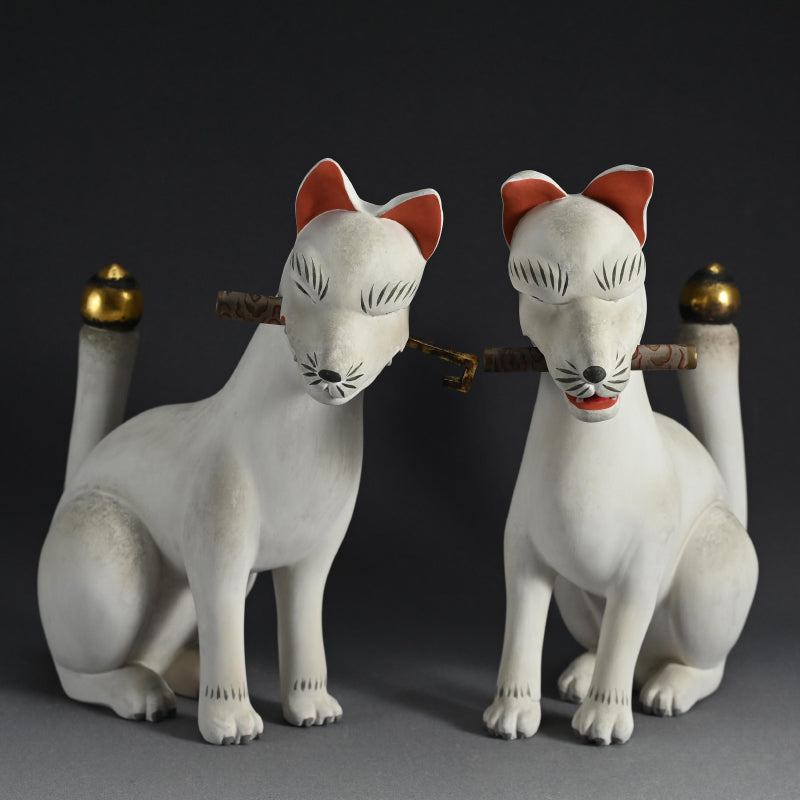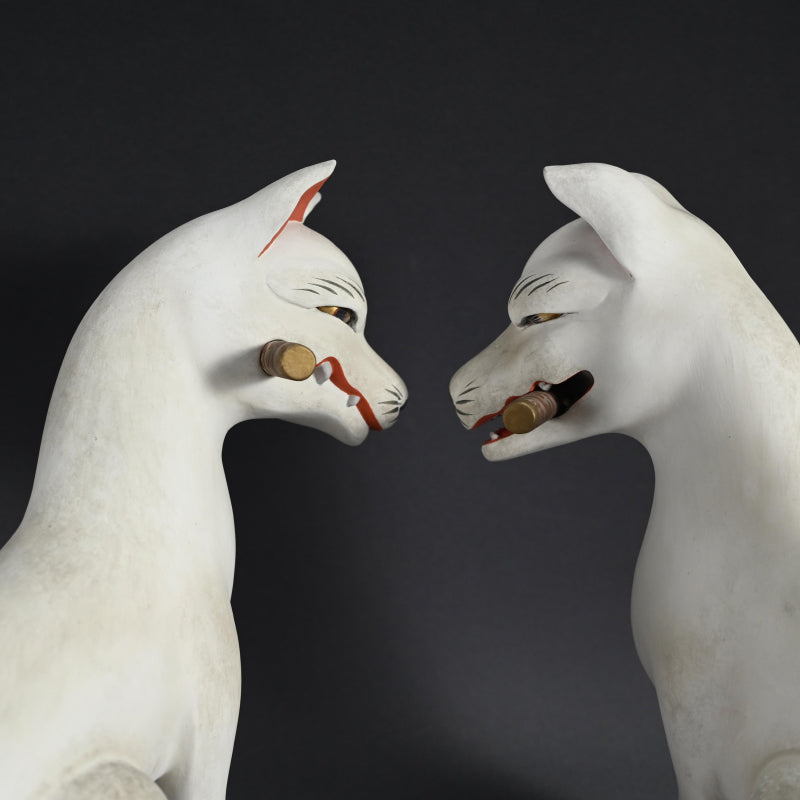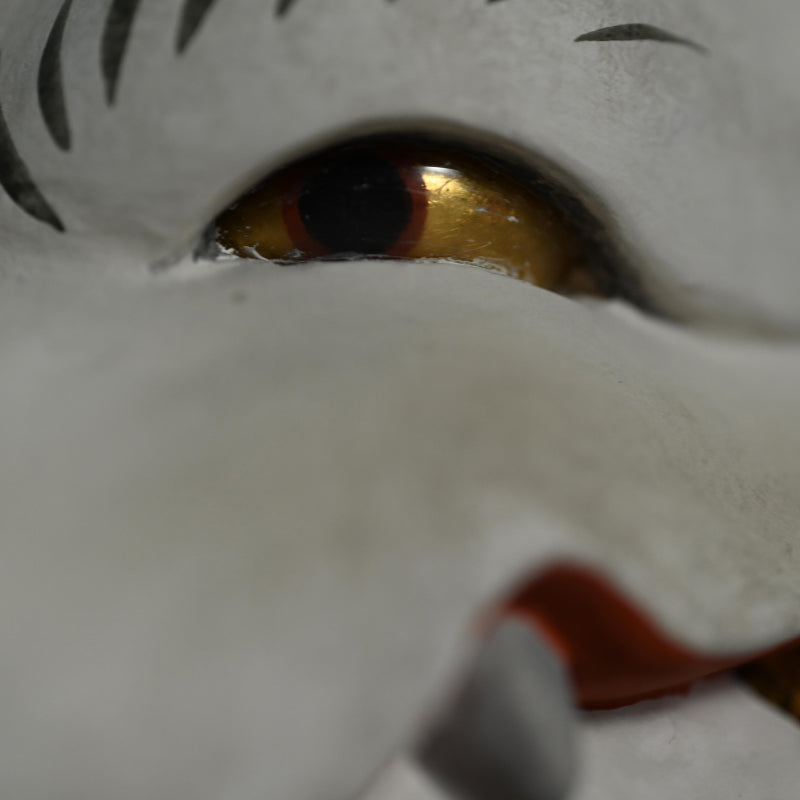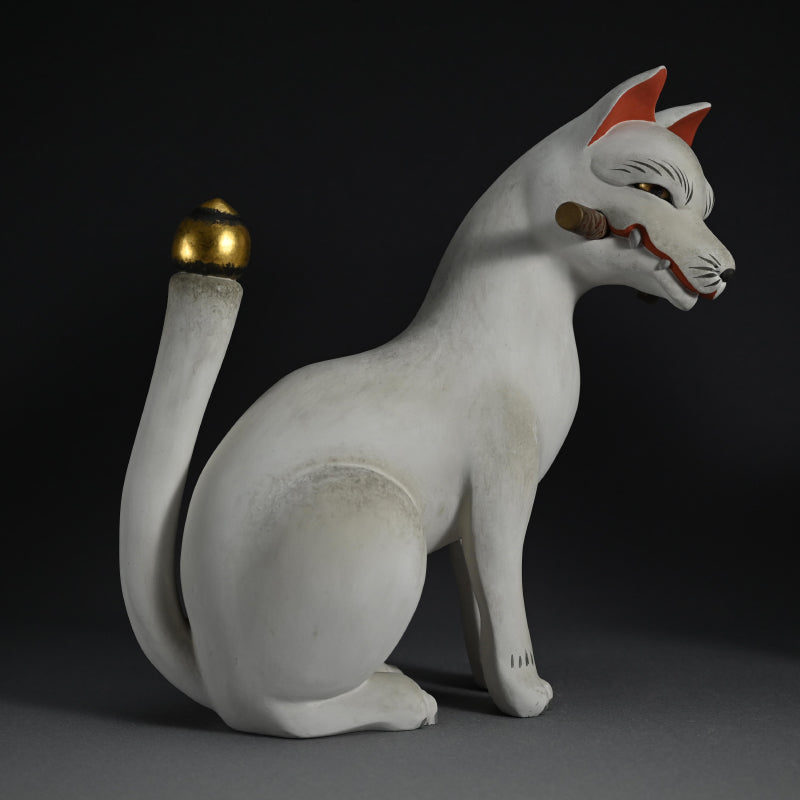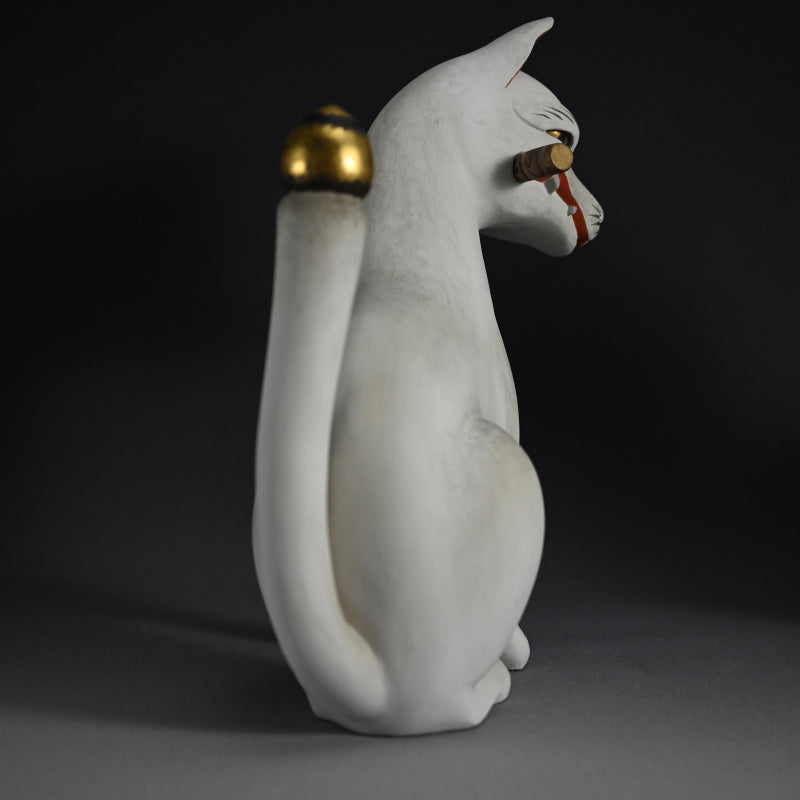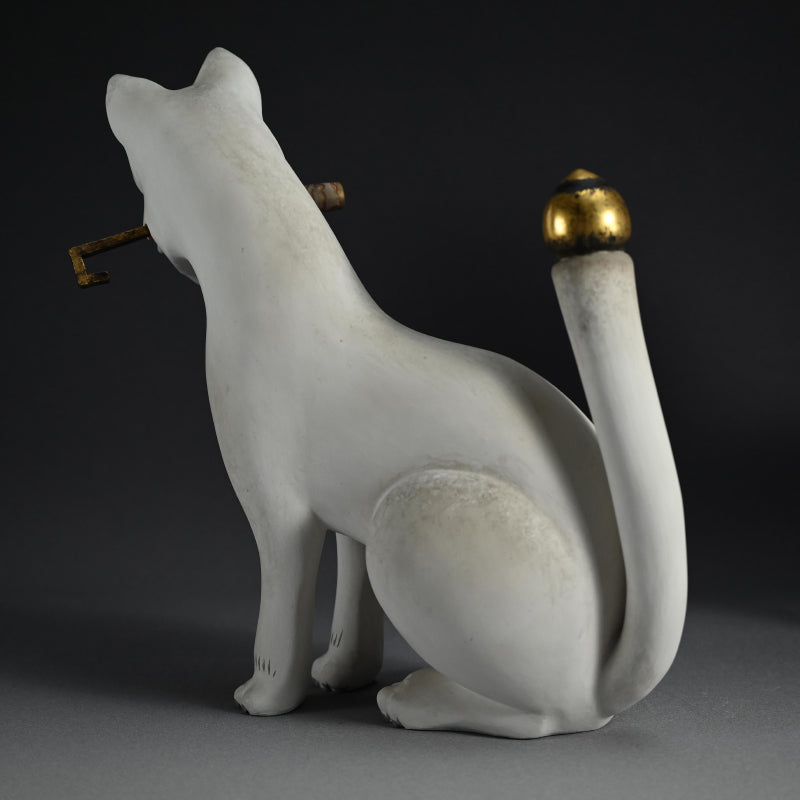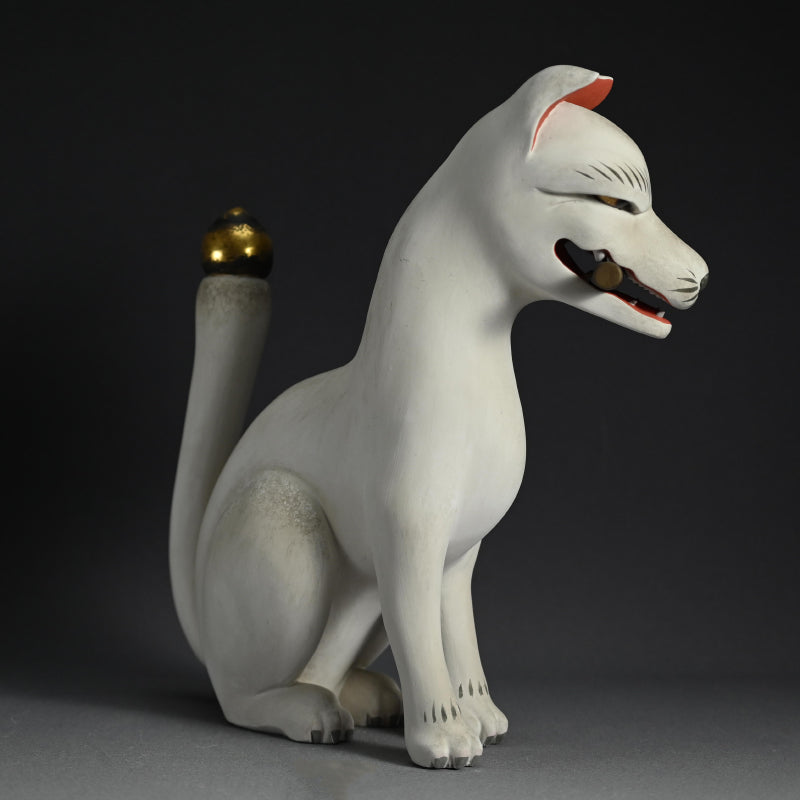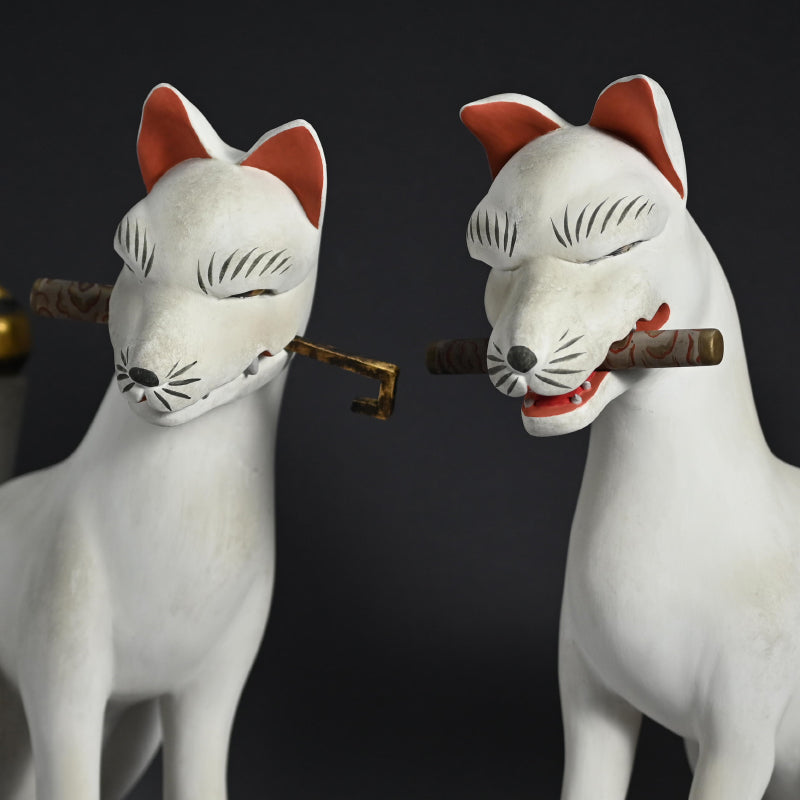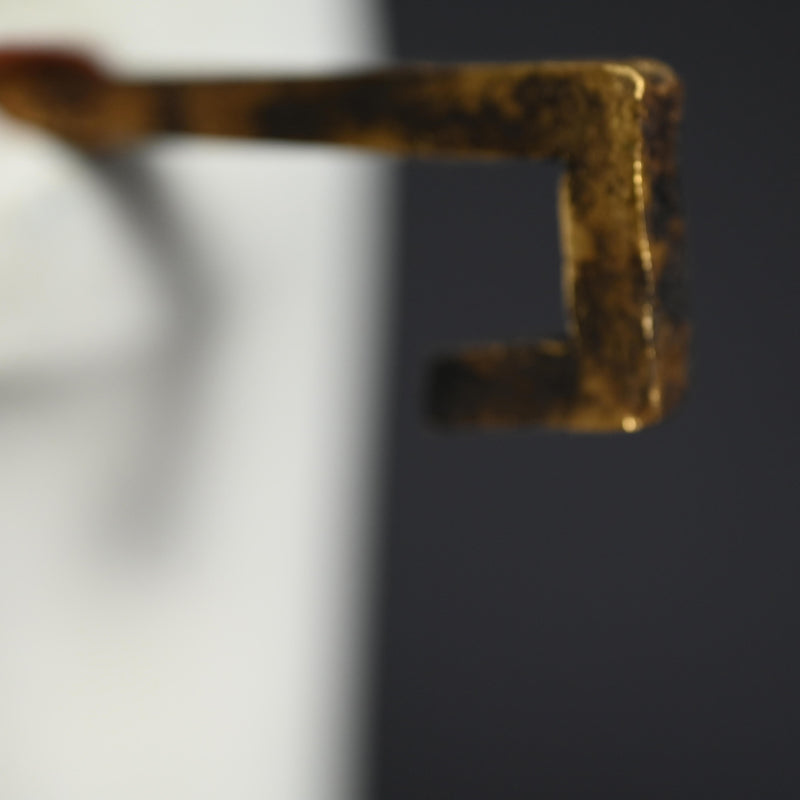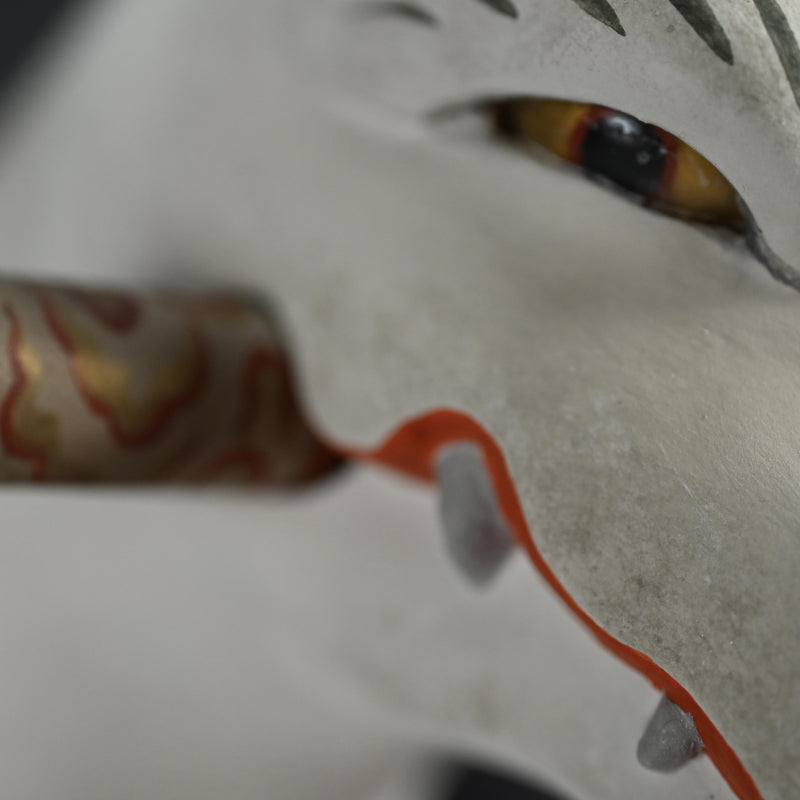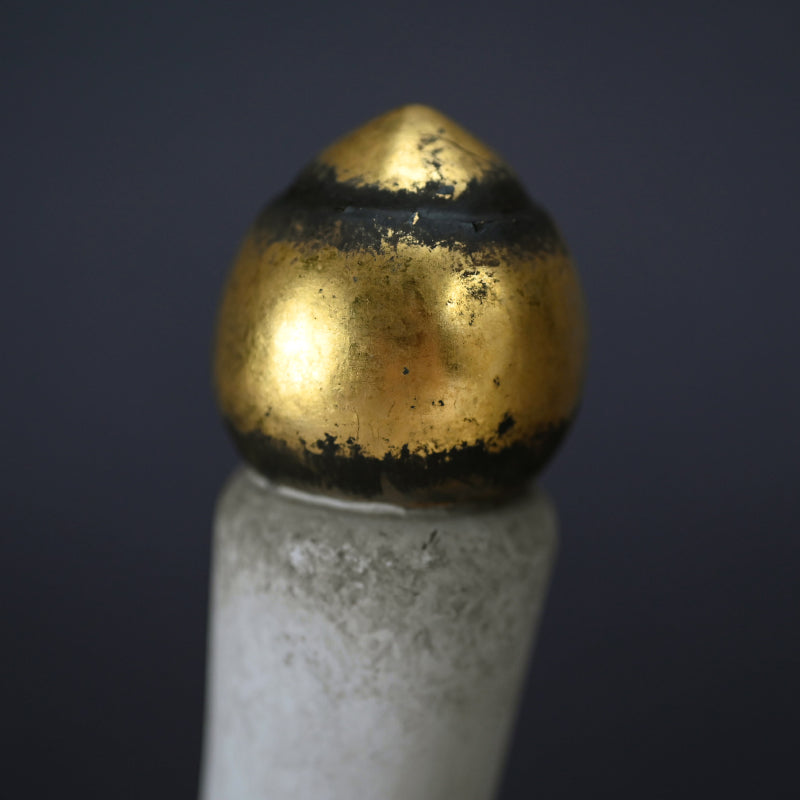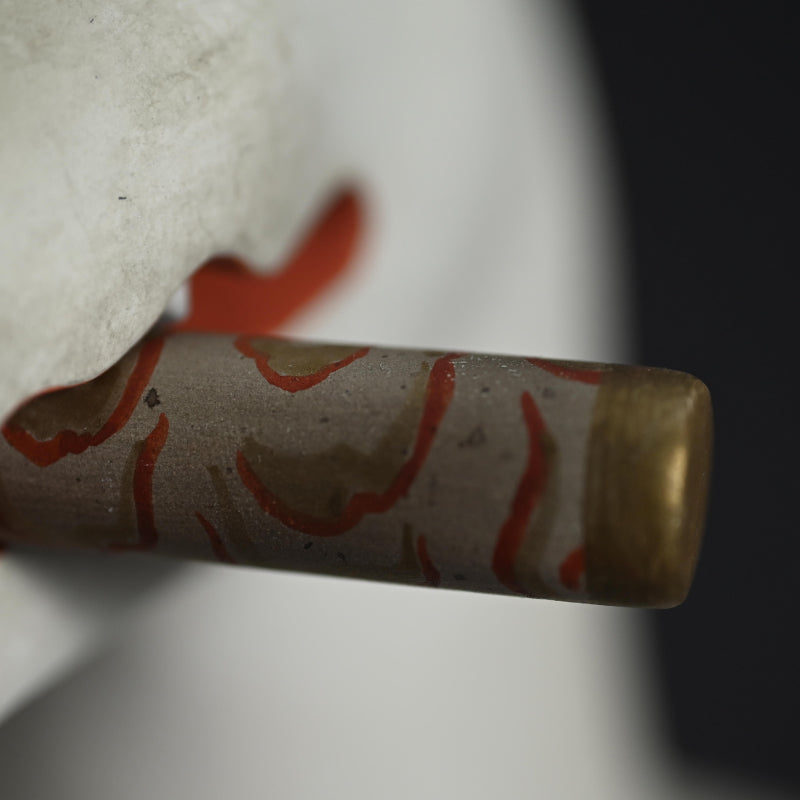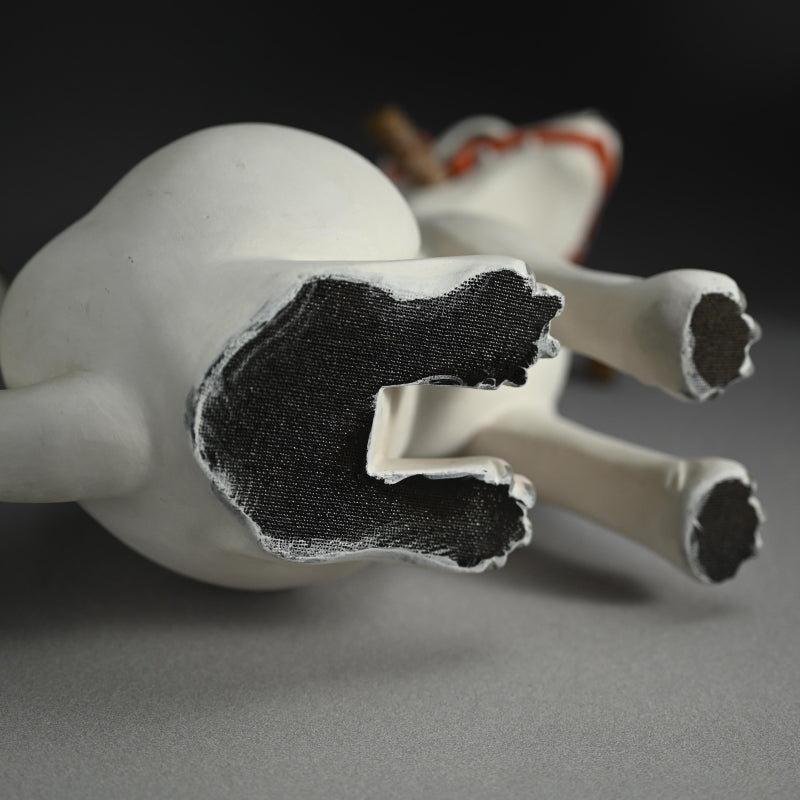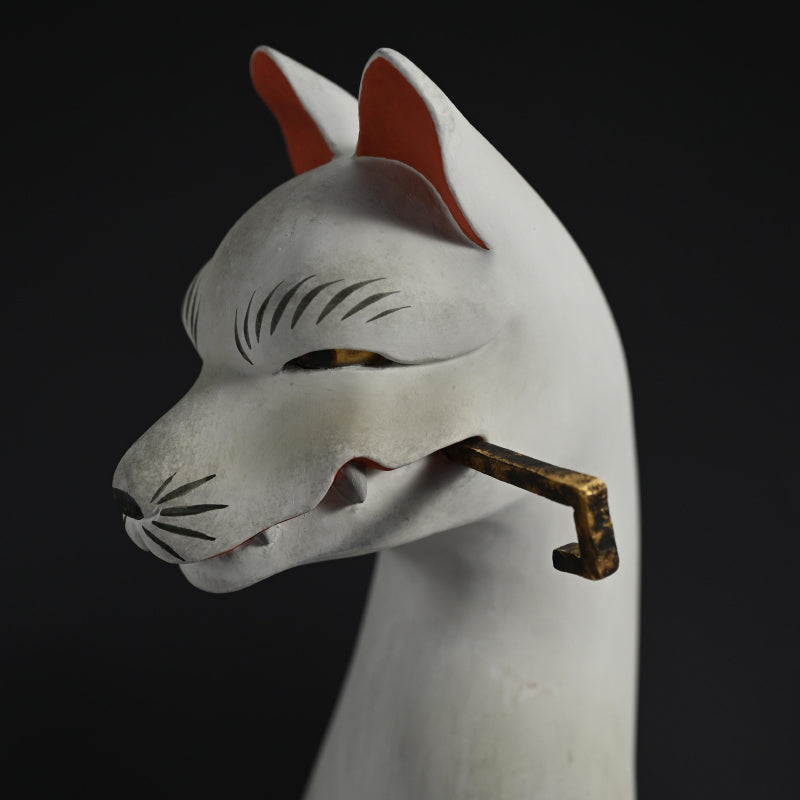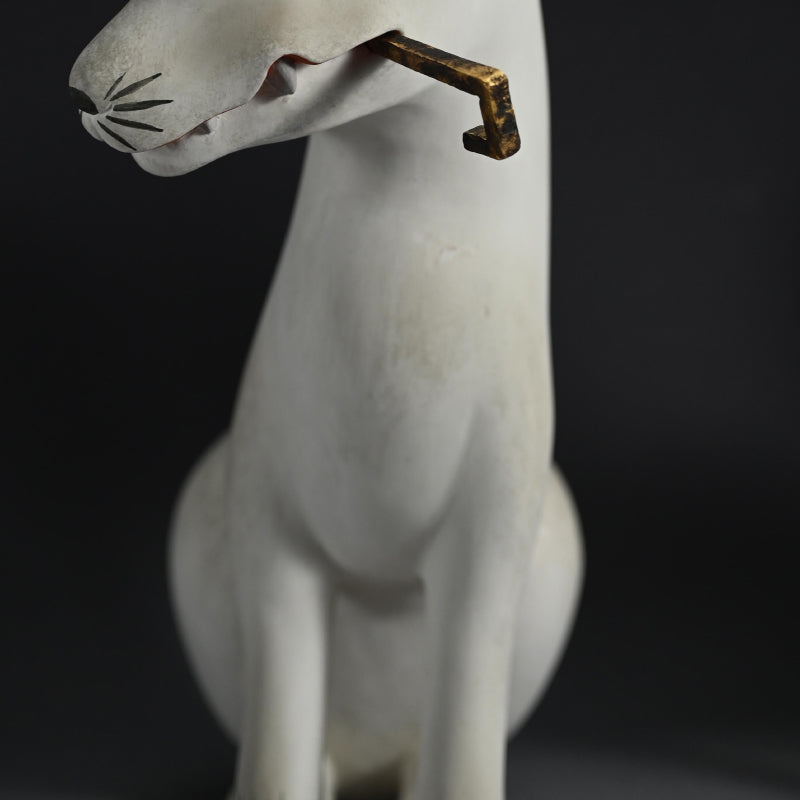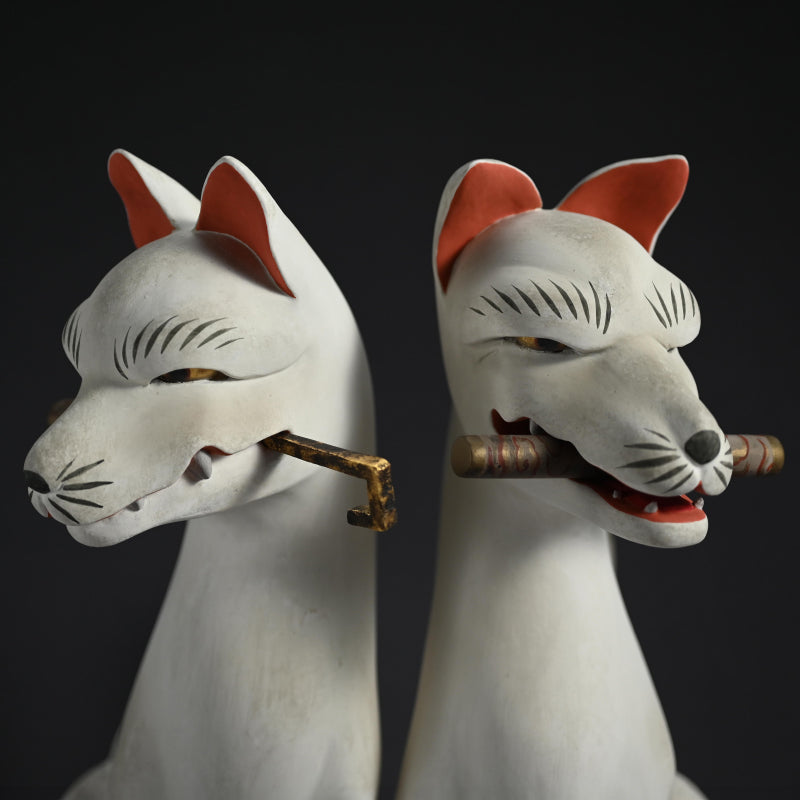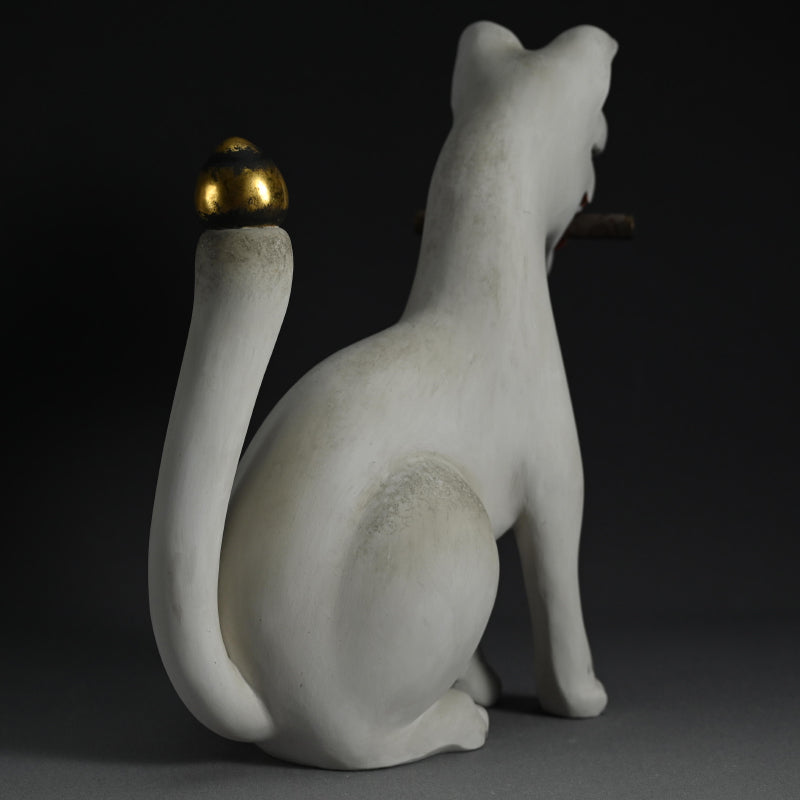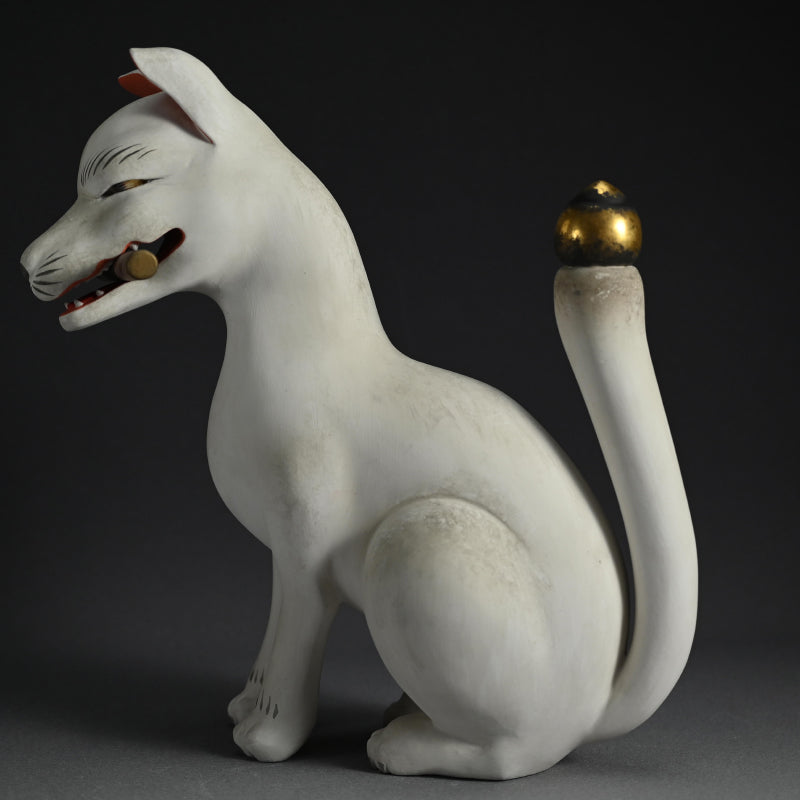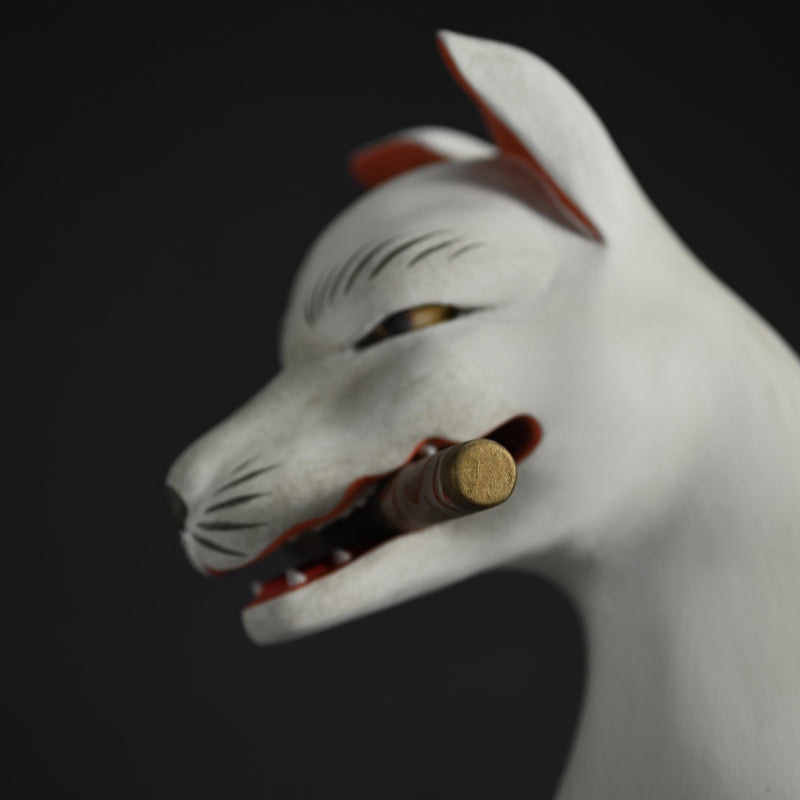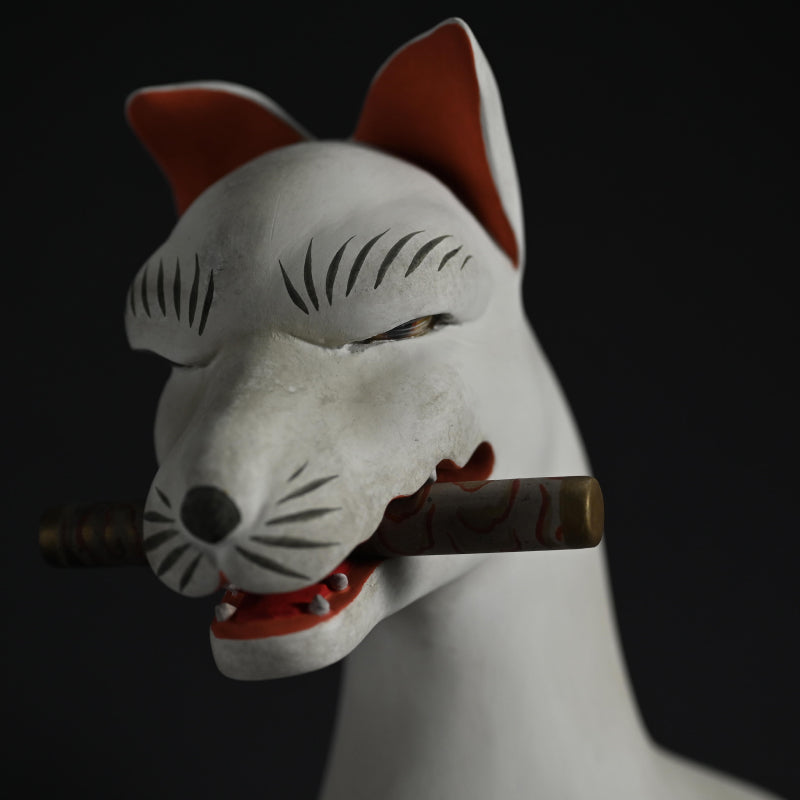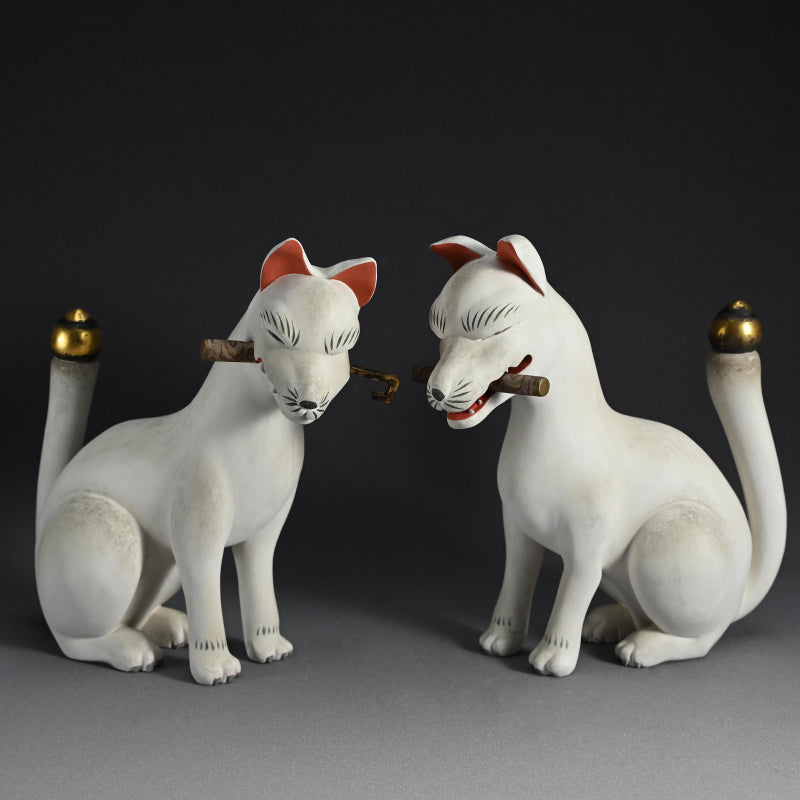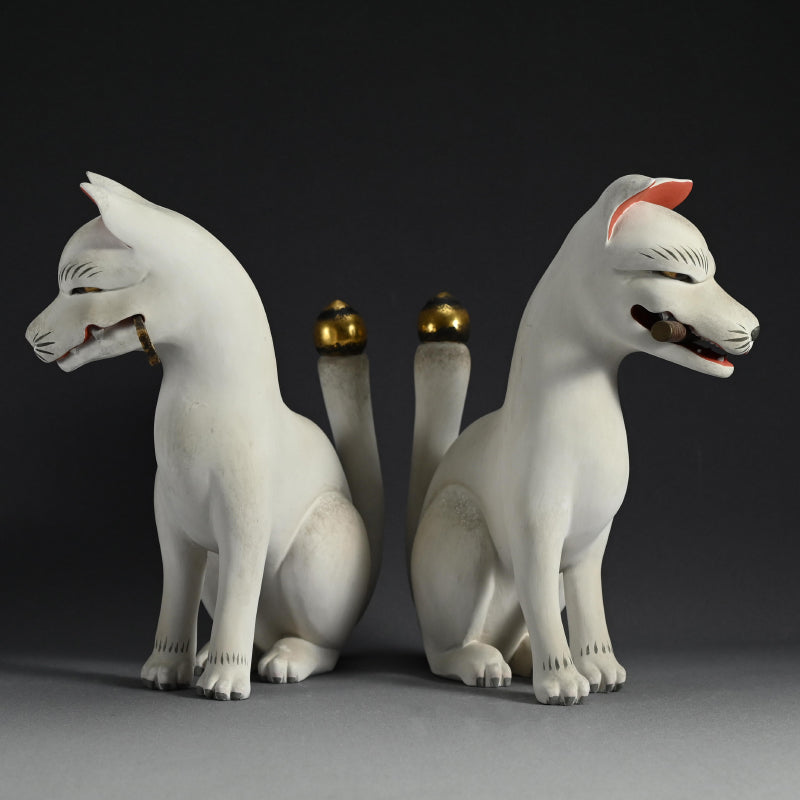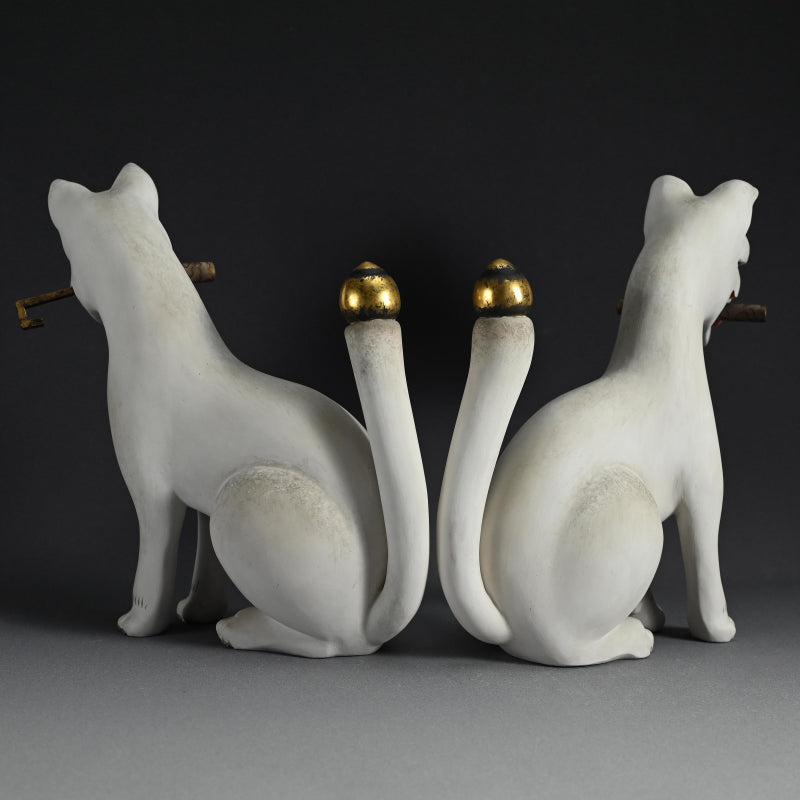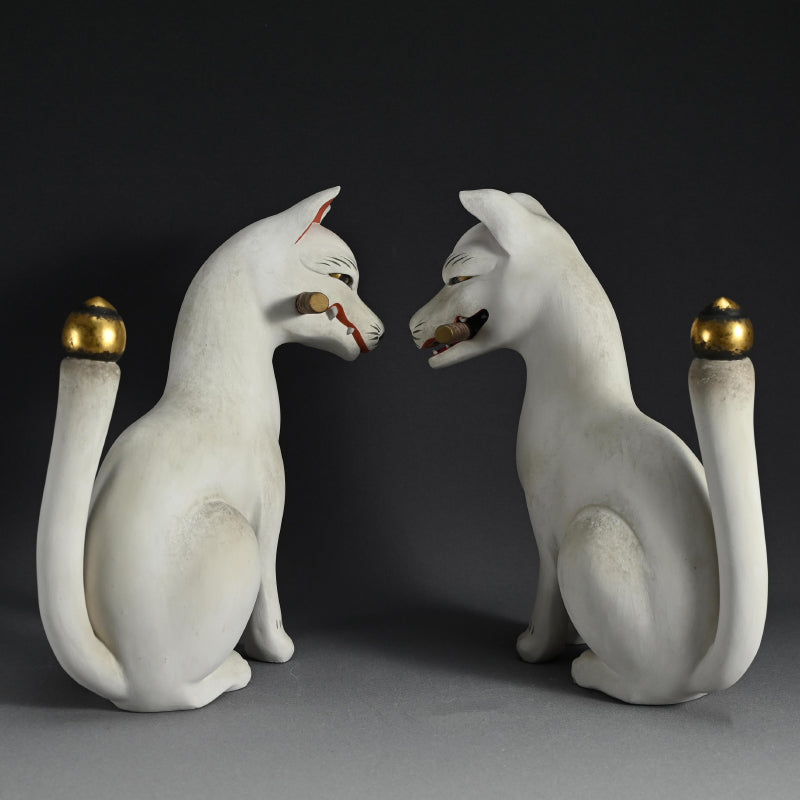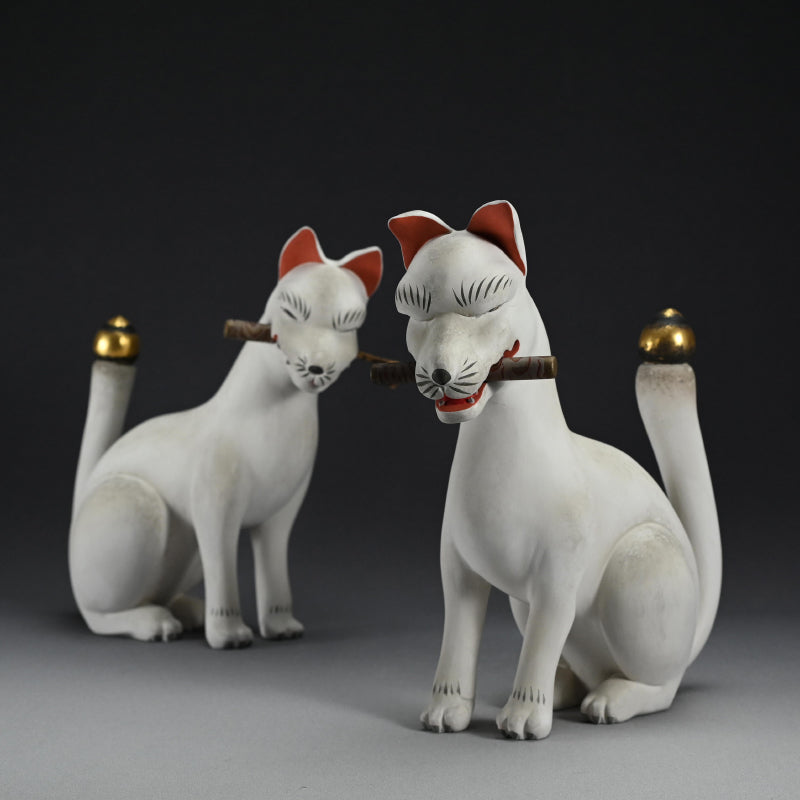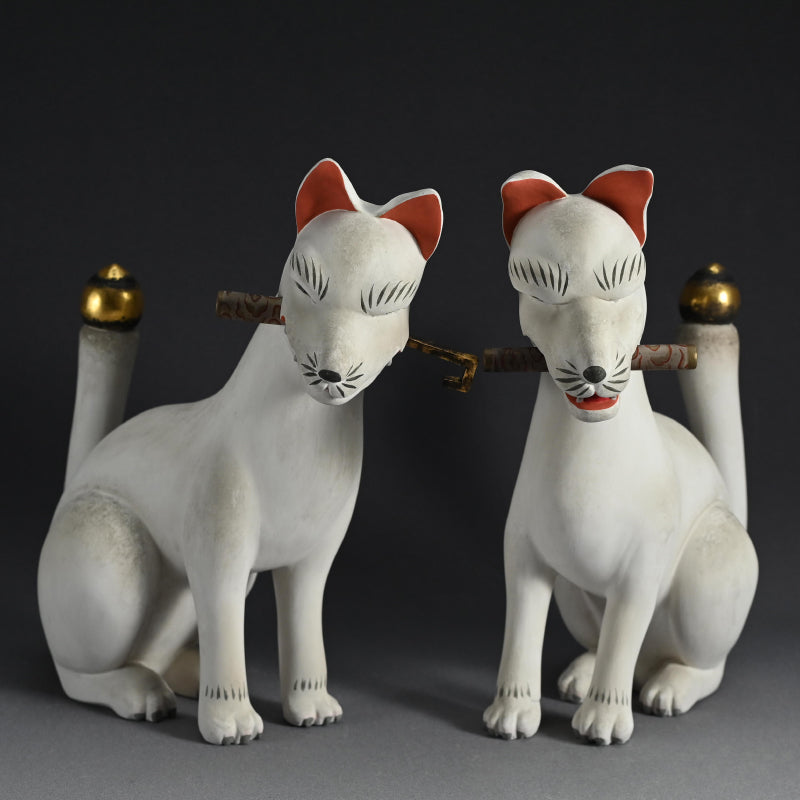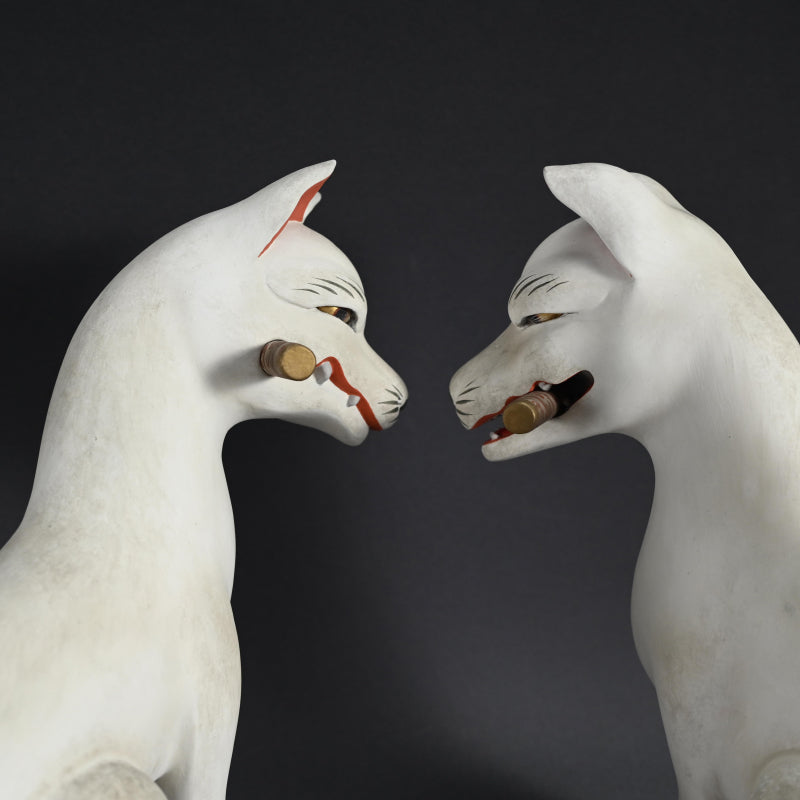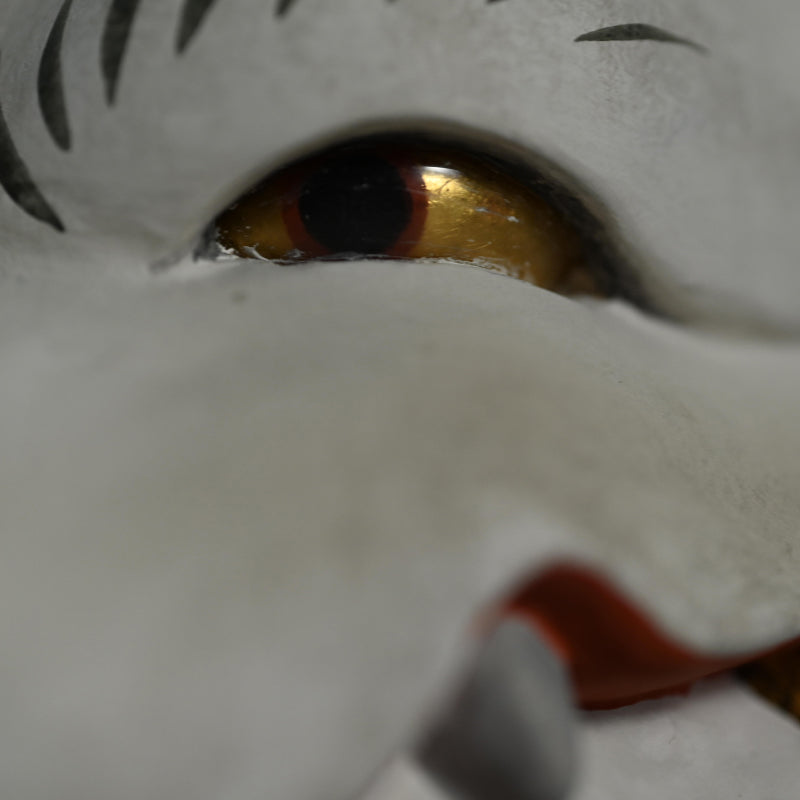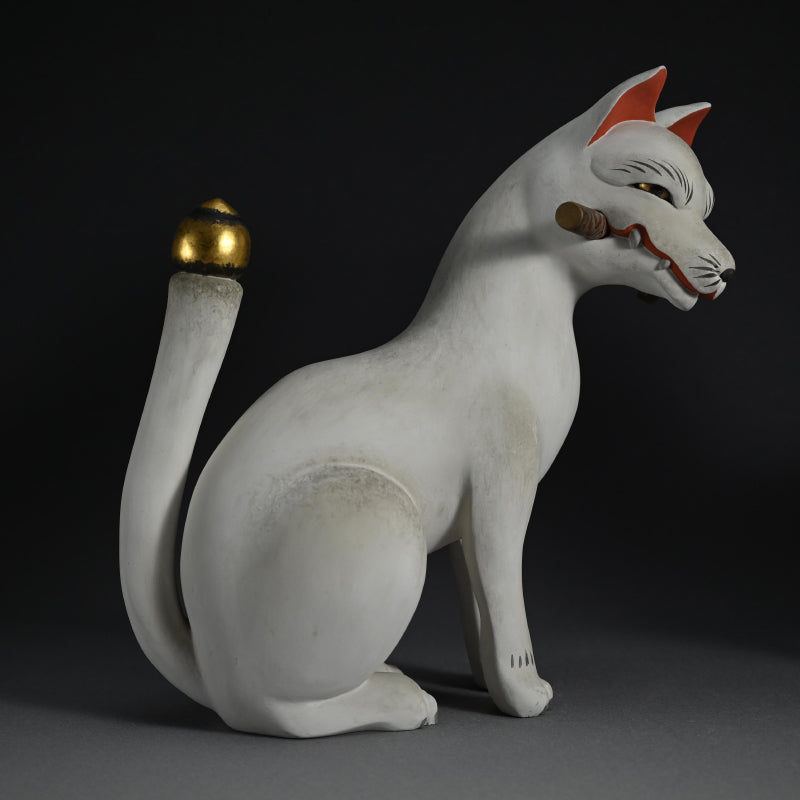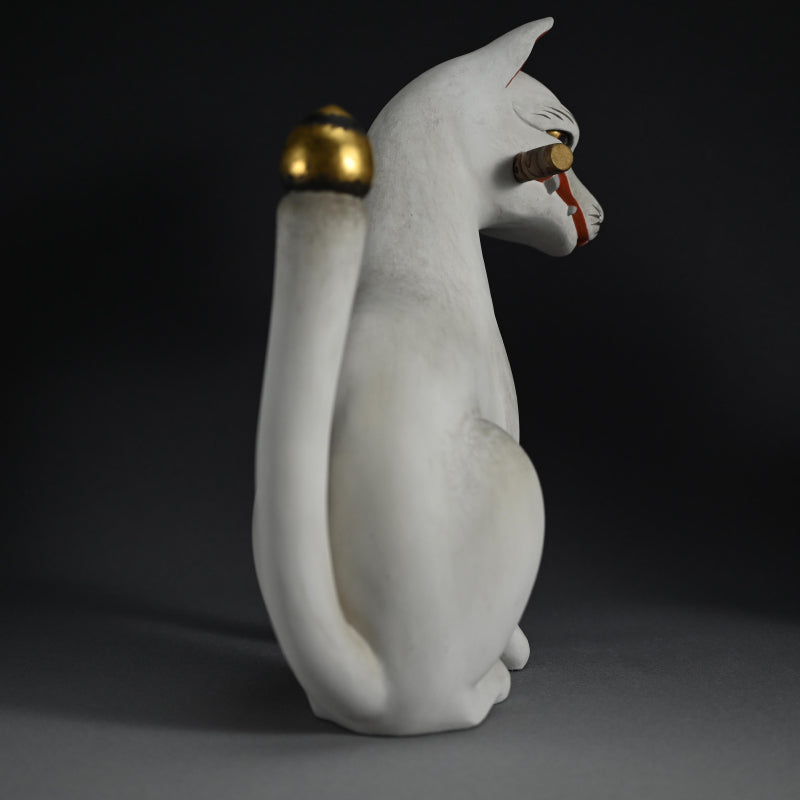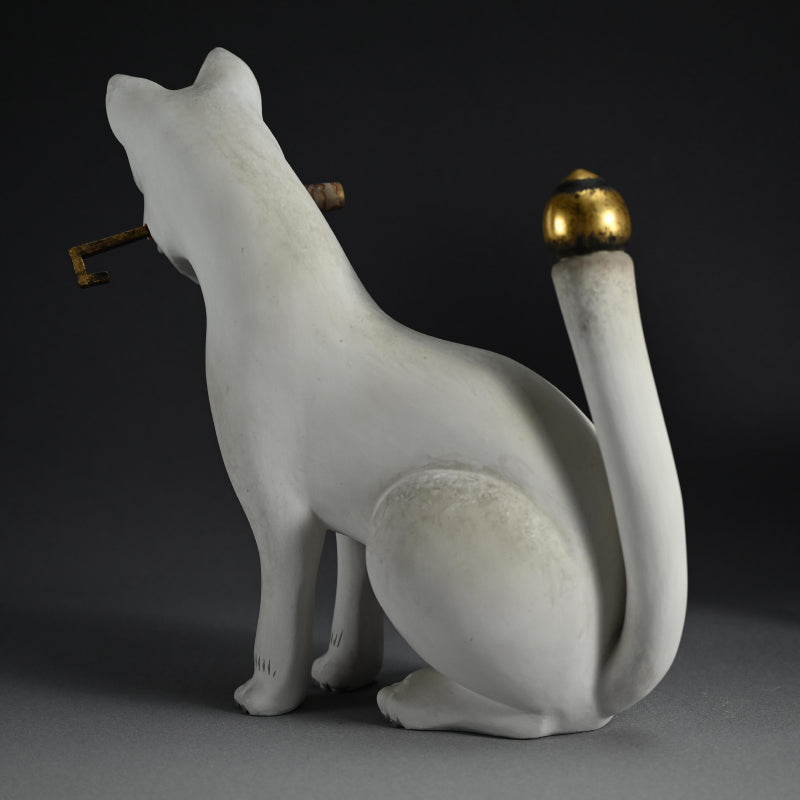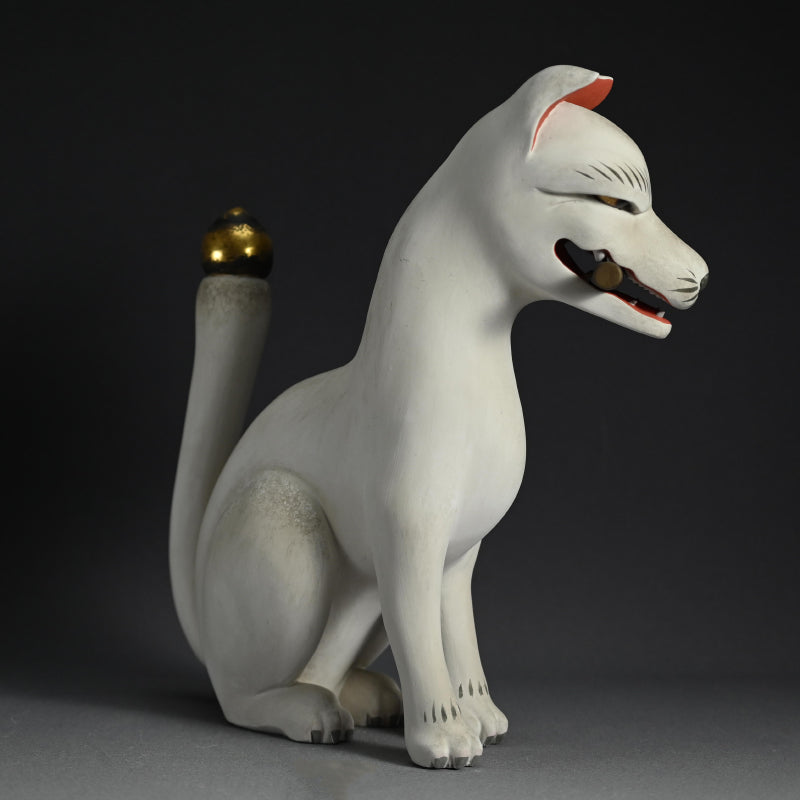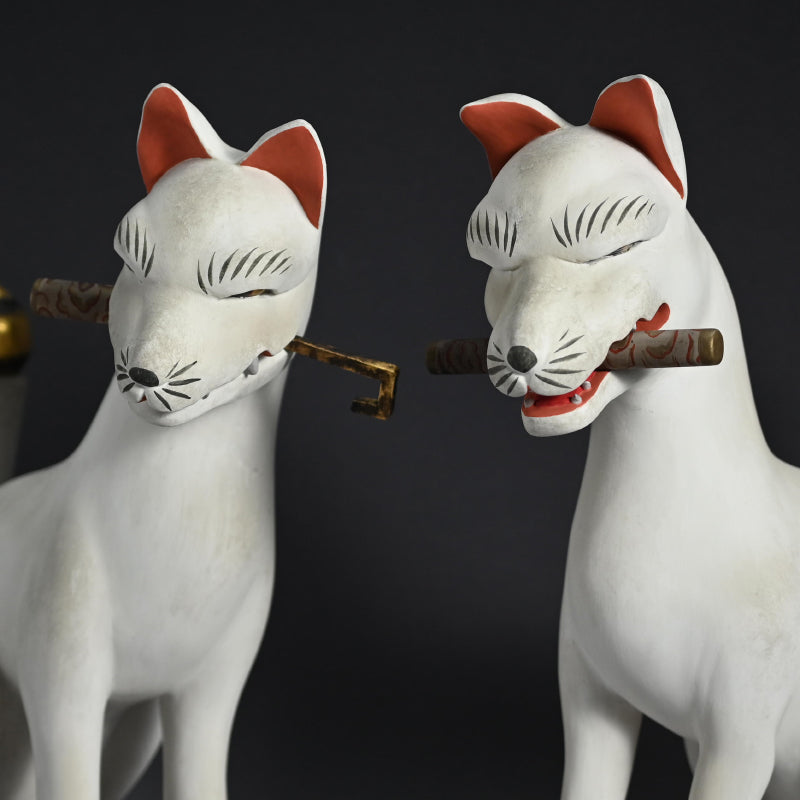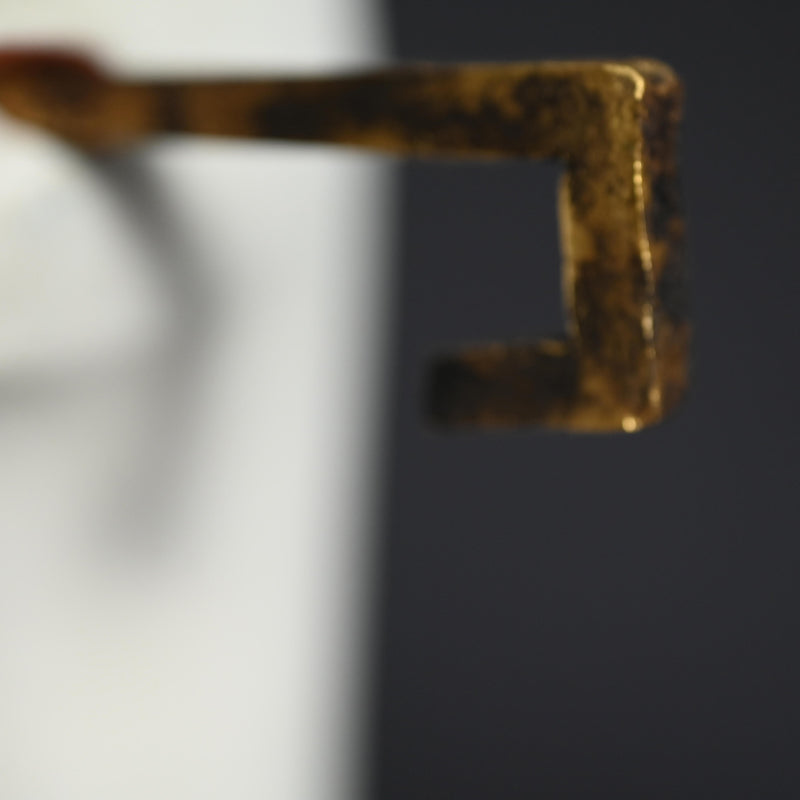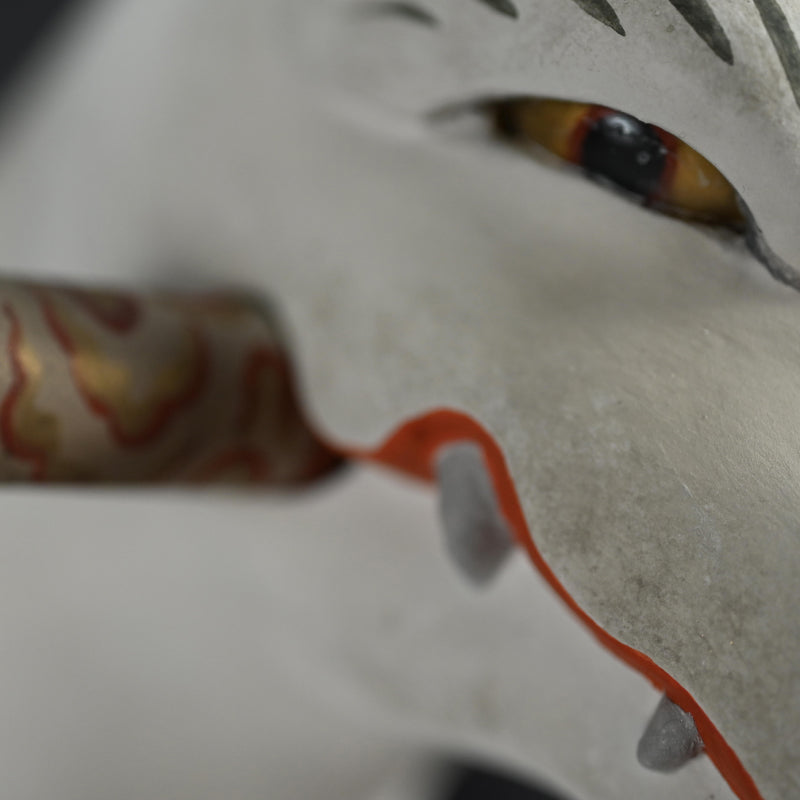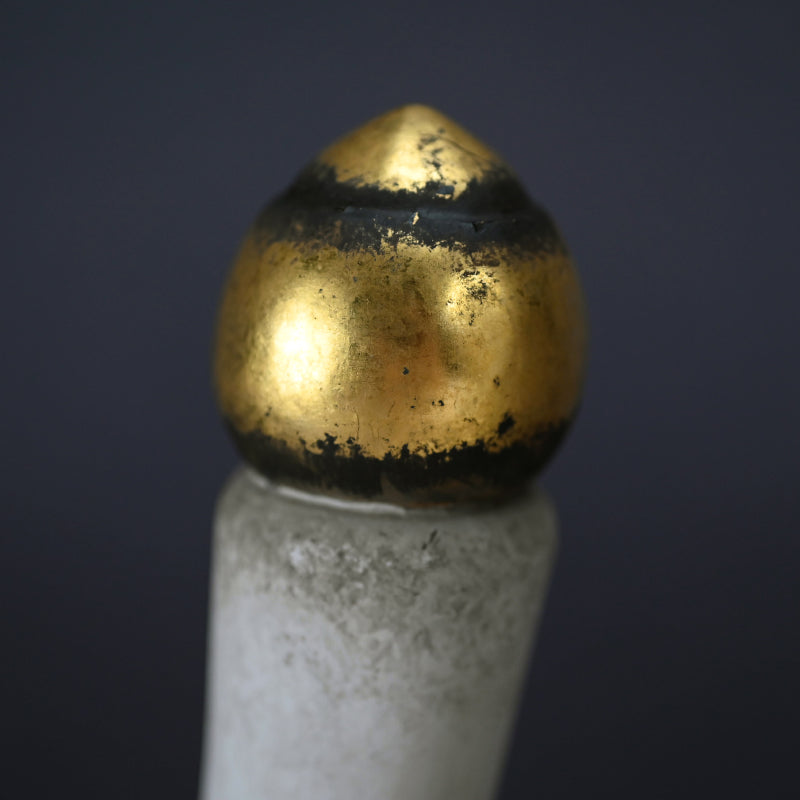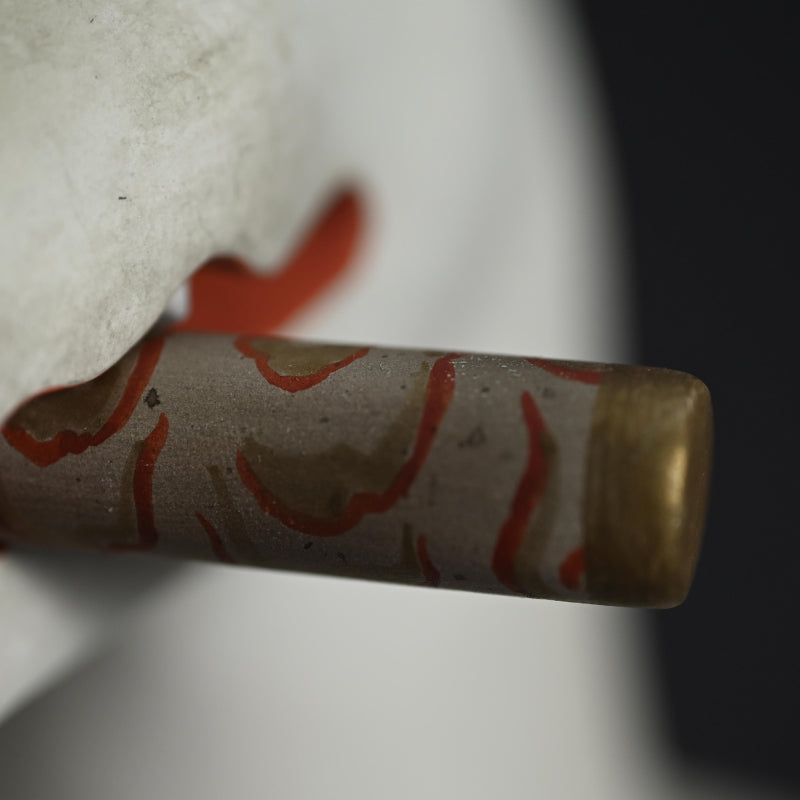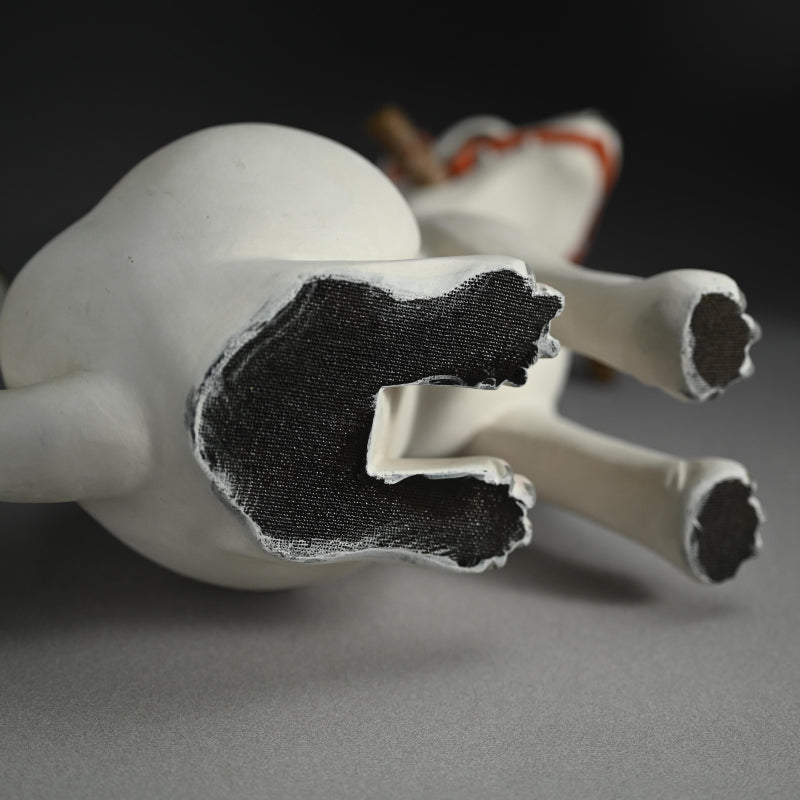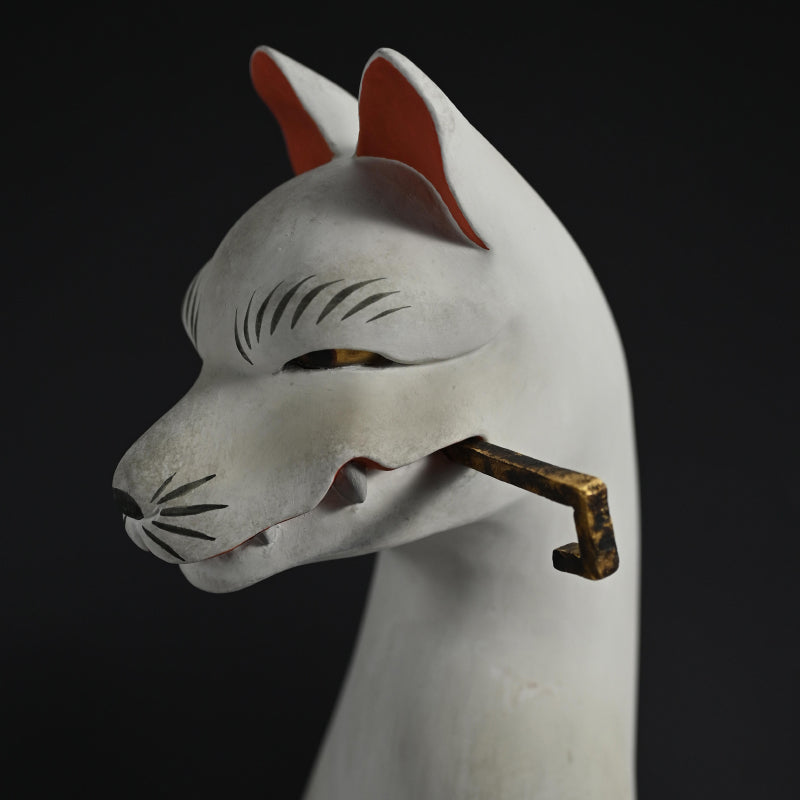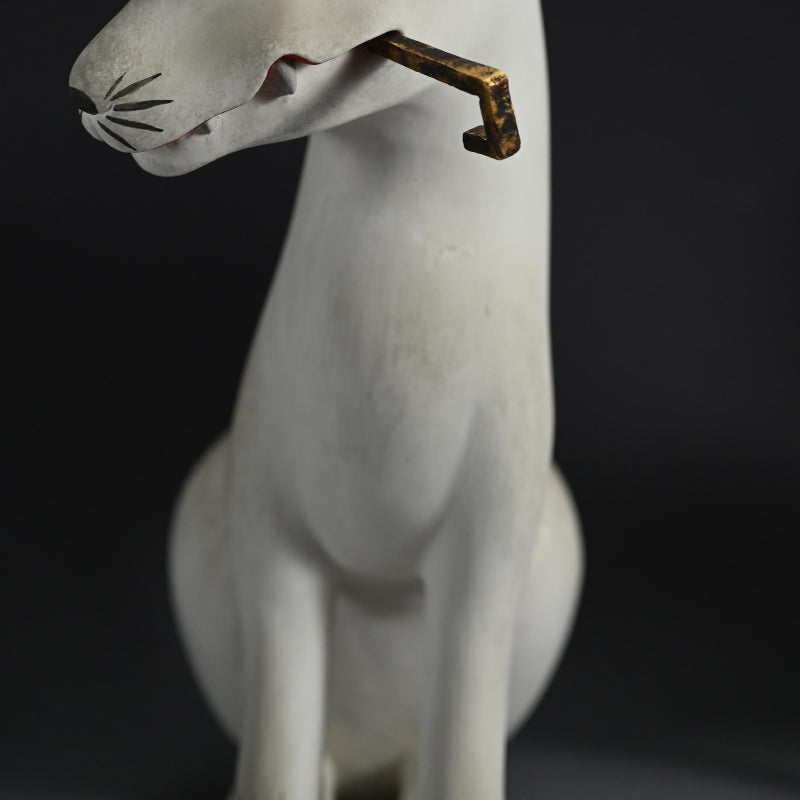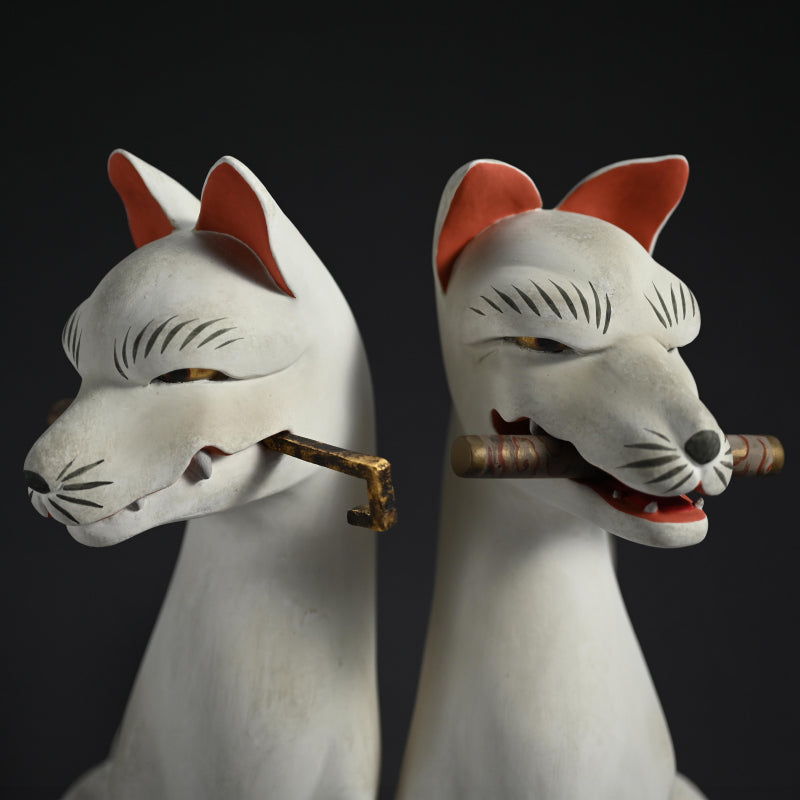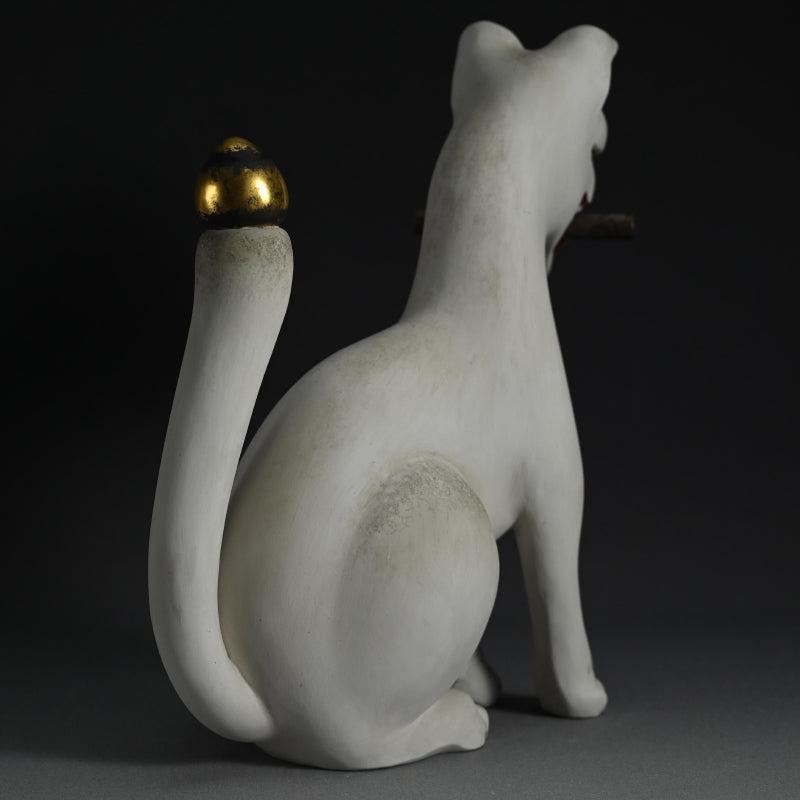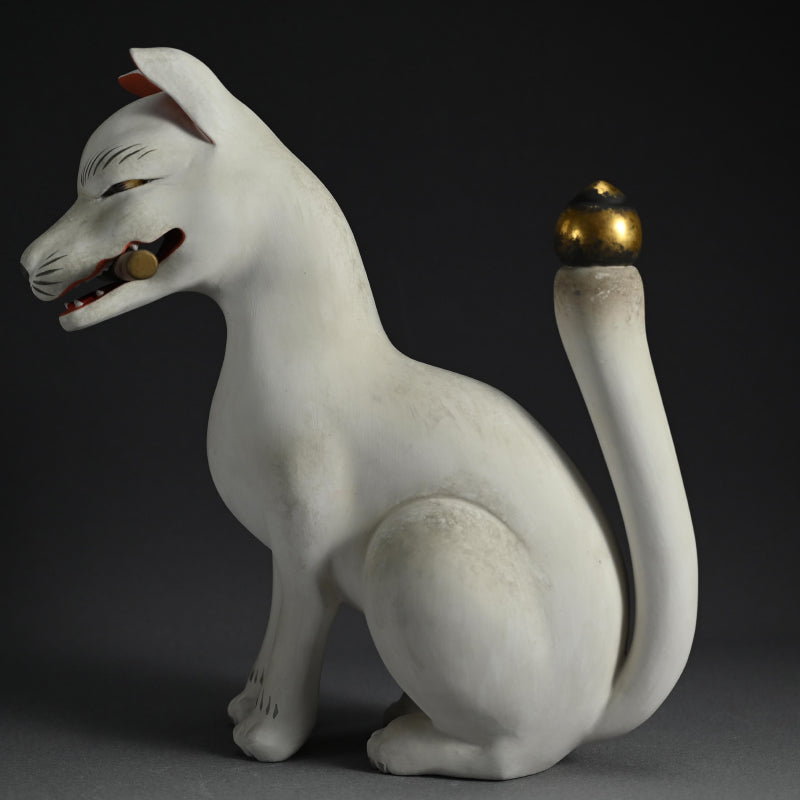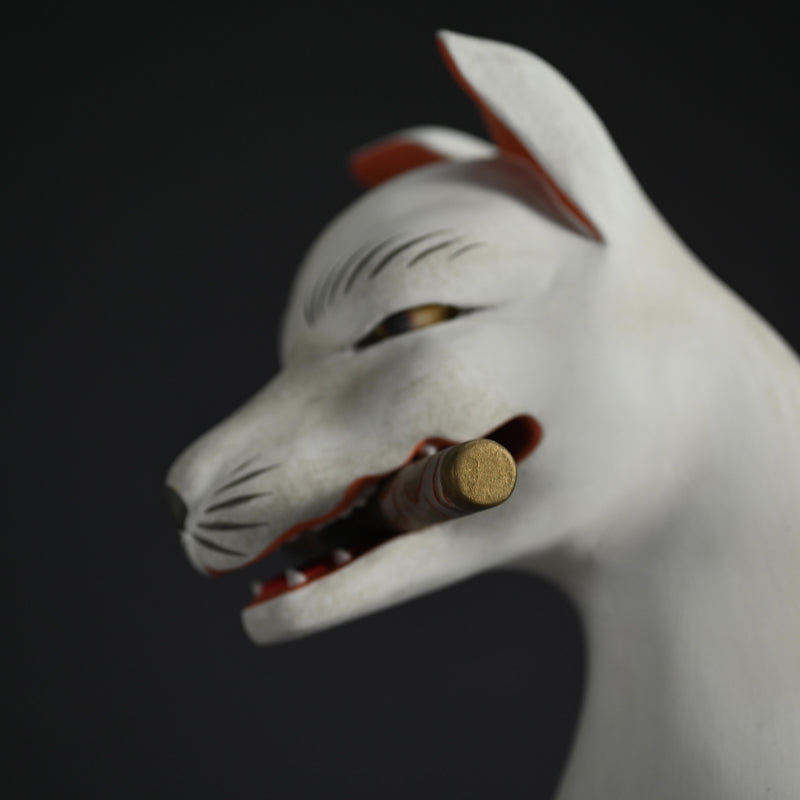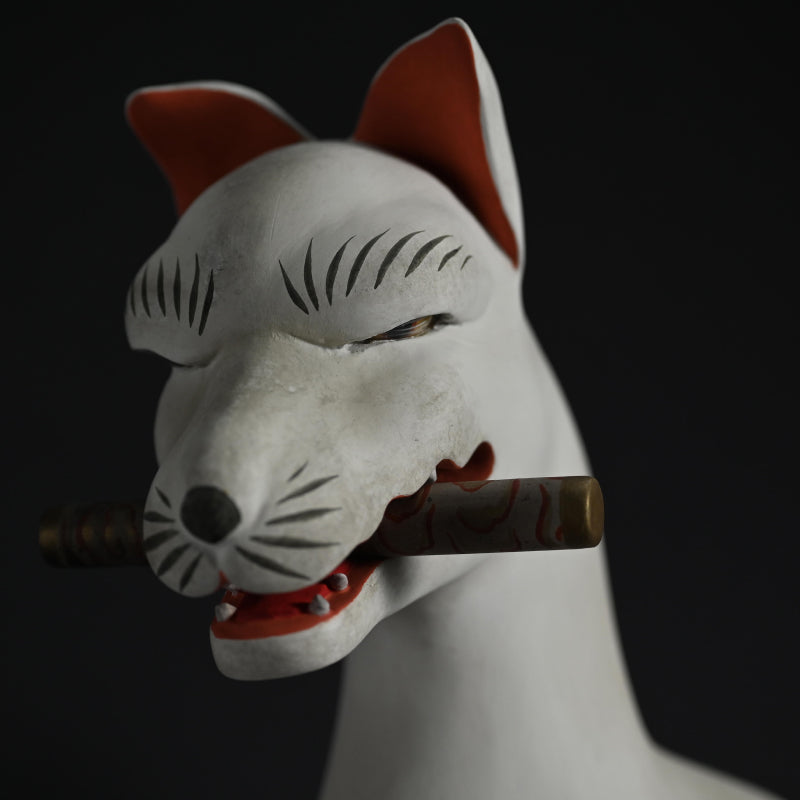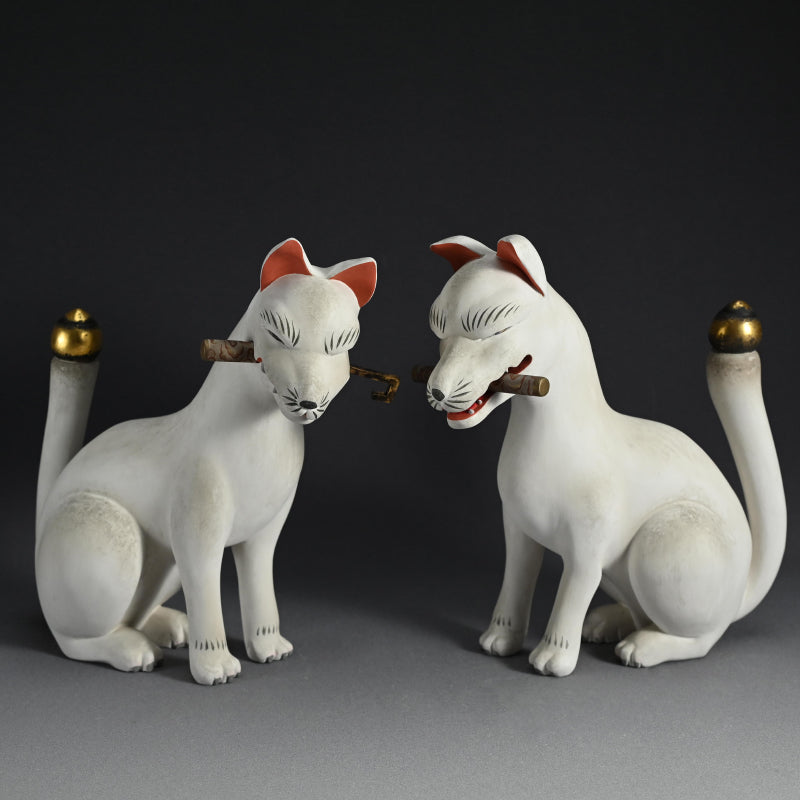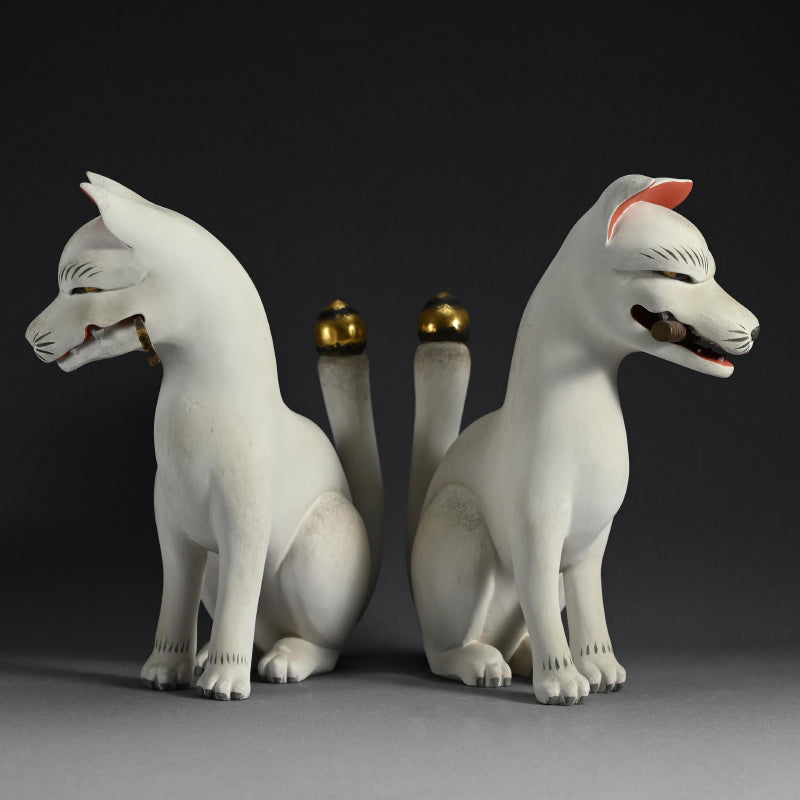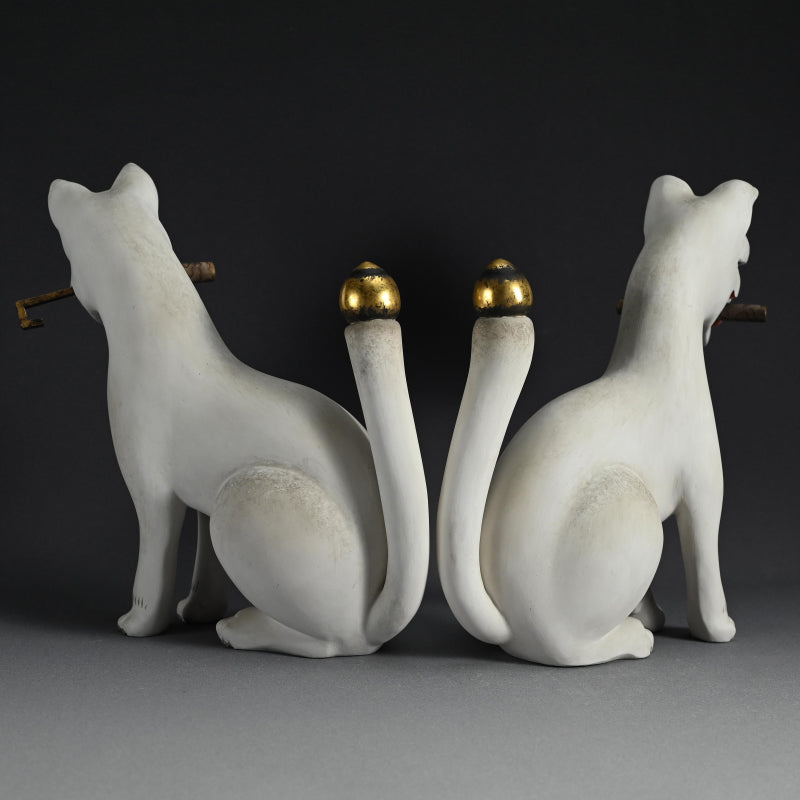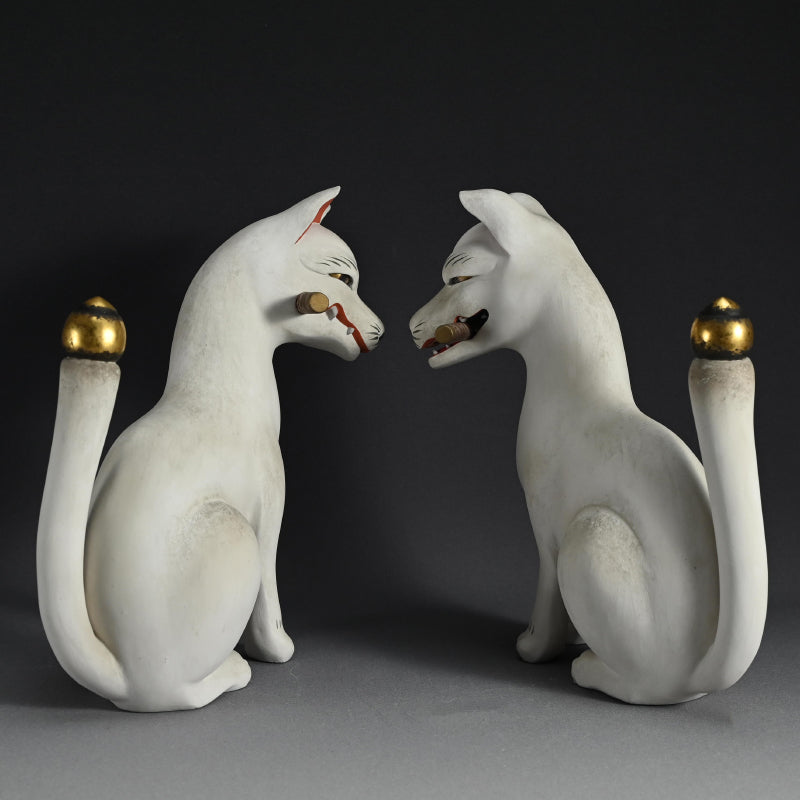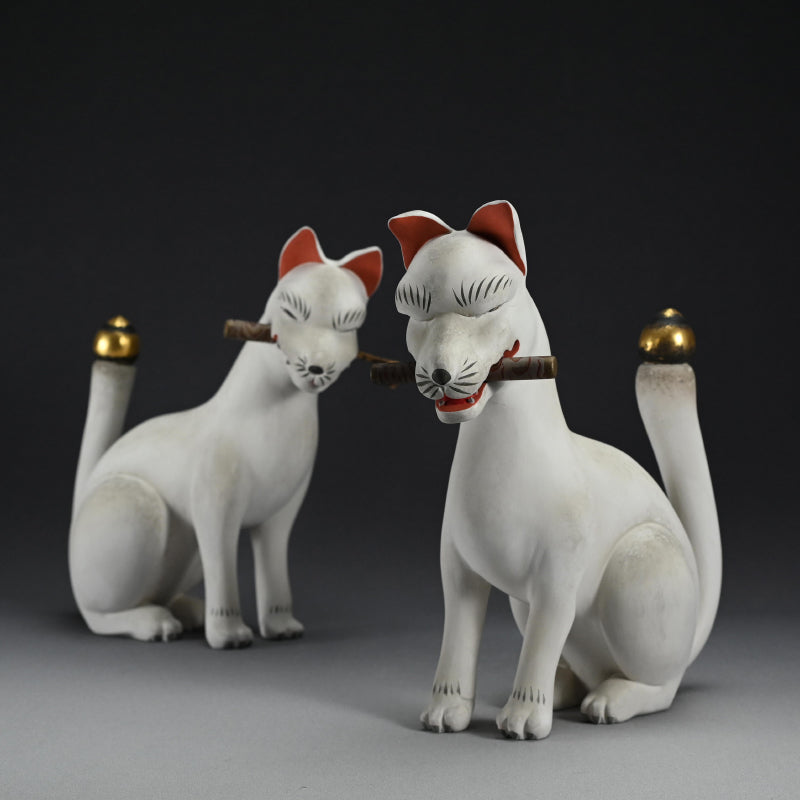Pair of Edo period Inari Kitsune Fox Guardians
Pair of Edo period Inari Kitsune Fox Guardians
Item Code: K946
Couldn't load pickup availability
An exquisite pair of large white foxes in the Yosegi carving style making use of fitted blocks of wood dating from the second half of the Edo period. They wear a shrewd look, glass eyes narrowed to slits, enhancing their mischievous image. The mystical carvings are covered in white gofun, stained a soft gray from age with highlights still white from eons of careful cleaning. The fox is a magical being, believed a shape shifter and protector of Shinto Shrines. They are also the kami (a term meaning divinity) of business. Every January the Fox Shrine, Fushimi Inari in Kyoto, is inundated at New Year with entrepreneurs, business people and the self employed praying for a successful year. The fox alone are roughly 36 cm (15-1/2 inches) tall each and in excellent condition. They have been professionally cleaned and repaired by the prestigious Matsuhisa Buddhist art studio in Kyoto.
Inari and fox symbolism are some of the richest and most complex aspects of Japanese religion and culture, bridging Shinto, Buddhism, and folk practice. In Shinto, Inari Ōkami is a fluid and multifaceted kami of rice, fertility, and prosperity, widely worshiped at shrines marked by vermilion torii and fox statues, where the fox (kitsune) serves as divine messenger holding keys, jewels, or rice sheaves symbolizing abundance and protection. Through Buddhist syncretism, Inari became associated with Dakini-ten, an esoteric deity often depicted riding a white fox, linking Inari worship to tantric rites and temple practices. Thus Inari, fused with Dakini-ten, has esoteric significance. In folk belief, however, kitsune take on a more ambiguous role: as shape-shifting spirits they may seduce, deceive, or protect; as possessors (kitsune-tsuki) they inspire both fear and ritualized respect; and as liminal beings they stand at the threshold between blessing and misfortune, human and divine. Together, Inari and fox symbolism embody the ambiguous, fluid, and interconnected nature of Japanese spirituality, where a single figure can be at once divine and evil, esoteric, and folkloric protective and unpredictable. Across these contexts, Inari and the fox embody fertility, wealth, and the precarious balance of life, their enduring power lying in their ability to bridge the sacred and the everyday.
Share
